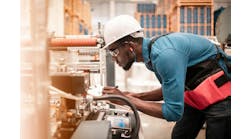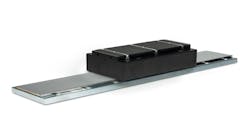About a year ago, my wife and I decided that it was time to upgrade our vehicles. Part of our decision had to do with the age of the cars. They were much loved but getting more costly to maintain as time went on. One car was a present from my wife when we first met. There was a significant emotional attachment, and I was sad to part with my beloved Mustang. The other car had been acting up for a while. Some random mishaps had twice left my wife on the side of the interstate on a holiday weekend. Repeated attempts to diagnose the issues had been unsuccessful. The seemingly random nature of the problems was absorbed into day-to-day life, and we moved on to matters that demanded our greater attention. The poor behavior, however, was a primary reason for going to a newer car as it had become unreliable.
I don't profess to be a car guy as my talents lie elsewhere, but I have been having a go at fixing the car for about 18 months. New spark plugs, a coil pack, new cables, a couple of new injectors, but the misfire and speed (limp mode) restriction has been such a pain. Well, after a year of playing with it, I lost interest and moved on to other things. It has been just sitting there in the driveway, collecting dust and leaves while I make monthly payments on it.
Around the same time that we parked some newer cars in our driveway, my youngest child came to live with us. As part of the usual rites of passage to adulthood, my daughter wanted to get her license and learn to drive. It made sense for us to put her in the car in the driveway rather than putting out yet more money on a car for her. After all, we were still making payments on it. Every project has to have a start point, so we decided that being able to start the car was a good place to begin. My wife bought a new battery earlier in the week, and I swapped it out after about 20 minutes of grunting and struggles. The car started on the second turn of the key and ran flawlessly. The misfires are gone, as is the “limp home” function that usually signifies a bigger problem. With a seemingly accidental action, our third car is no longer the ugly step-child. Despite all the effort I put into treating the symptoms, it turns out that the electronic control module wasn’t getting enough voltage from the charging system to allow it to function properly, and it was throwing out false messages that had me all over the engine in an attempt to fix things.
I mention all this because sometimes we overcomplicate the issues in our lives. The battery has been a little sketchy for more than three years, and I was stingy enough to just give it a boost once in a while when it didn't want to start. It's amazing how something I was pushing to the back of the shelf for years turned out to be the source of my discomfort and frustration for so long. The moral of the story is, if something is bugging you, do something about it. Don't let it fester and nag at you until it wears you down.
By this point, you are probably wondering where I was going with all of this. Well, my adventure with the car out in the driveway really isn’t that much different than the decisions that we face every day in our work environment. Automation is a wonderful thing until it isn’t working properly any more. Like any valued objects in our lives, we grow attached to the machines, the processes. We get to know the ins and outs. We can predict how it breathes and can sense when it is functioning below its potential. The machine becomes an old friend that we baby and nurture when it starts coughing after a weekend of downtime. Our love affair with the machine, however, comes to a screeching halt when we go to the supply shelf and the shelf is bare.
The life of a co-packer can be like going to the carnival. You can be on the carousel, or you can be on the screaming death drop. The problem is you don’t get to choose which ride you are on. Capital investments can be much like that carnival ride. Dumping your profits back into the company seems like a reasonable thing to do, but what if you hit a dry spell? Will you plunge down to sure ruin? Successful investments are the goal of every enterprise, but at what point do our assets become liabilities? How do we know when we have gotten all we can out of a piece of equipment, and when do we let it go?
A recent emergency repair opportunity exposed a vulnerability that we hadn’t previously anticipated. We have about a dozen blending systems that are key to our operation. These systems were installed about 15 years ago and pretty much every one of our 30 production lines make use of one of these mixers for at least one component of a finished product. Good profits over the years have paid for the initial investment years ago. Not a lot goes wrong with them, and, when it does, we have been able to draw from our on-site stores to get things up and running in relatively short time. We even felt so comfortable with the operation of these workhorses that we ventured to install yet another system a couple of years ago with a homegrown control system. The original plan was to simply build another panel with the exact same design. Once we looked into it further, we realized that we couldn’t just make another one as the main control processor was no longer on the active sales list at our vendor. Not one to let this get us down, we migrated our design into the replacement processor and made a great system with many value-added features. We wouldn’t hesitate to go to this new system again if the need for another blender comes up.
When our emergency situation came up, we did what we always do. We went to our spares cabinet and pulled out another one. In this case it was a variable-frequency drive (VFD). The swap-out didn’t take more than about 30 minutes, but when we went to start the system back up, the drive didn’t want to respond to commands. It seems the communications module was fried, along with the original VFD. The response was the same, however. We went to the spares cabinet, but there wasn’t a spare. In all the years that we had these mixers, we’ve never had a reason to consider having a communications module as a spare. They simply haven’t failed. After more than a few minutes of panic, we got lucky. Turns out when yours truly was swapping out the drives, I had grabbed the communications module in such a way as to move a couple of DIP switches on the unit and rendered it speechless, so to speak. Some time spent with the OEM drawings (learning that the DIP switches were not as indicated on the drawing) and communications module manual, and we were back in operation.
For years, we have been complacent to just fix what breaks. We have been fairly predictive in our choice of spares and, perhaps, a little bit lucky. However, this brush with the much-dreaded downtime exposed a risk we haven’t really prepared ourselves well for. What if we couldn’t get a replacement communications module? Sure, there are a few out there on Ebay, but should ecommerce for worn-out components be our plan to keep our equipment operating? We like to think that, as a co-packer, we are innovative and an innovative solution is what was required here.
Having 11 of these systems and one new one gave us an idea. Why not plan a replacement before we are required to do one? Doesn’t that make more sense? The control panels are already built. The existing PLC and associated variable frequency drives are all in good working condition. Why not plan a rebuild for just the PLC and drives and leave everything else in place? The replacement components would match the ones in the new mixer from a couple of years ago so that we wouldn’t be reinventing the wheel. Performing the upgrade in a planned event rather than an emergency event not only gets us an upgrade on our control system, it also gives us a sudden surplus of components—more than enough to cover our immediate and near-future needs. Once the first upgrade is complete, we can comfortably plan the next one with the knowledge that we can do this when we want to and not when we need to. We can even submit this to a capital plan where a budget can be set up to rotate through the 11 aging systems in a manner that gets us up to date without breaking the bank. The best part, of course, is we aren’t surfing the Internet looking for components. Most ecommerce sites have good, reliable used equipment, but I don’t know of a single person who doesn’t buy items in such a manner and not sweat it out until they can prove that the part will work in the system. What better assurance can we have than parts that we took out of a working system ourselves?
The decision when to replace should not be driven by the need to replace but, rather, the desire. Projects have a greater degree of success when we have control over the events. Planning for upgrades should take every element into consideration, not just the high-price items. It wasn’t our PLC or a VFD that would have sunk us in our recent emergency; it would have been the communications module. This is the same one that has been retained out of other VFD failures. It is the module that is the least likely to fail and, yet, if it had, we would have been dead in the water until a replacement could be found.
Like the battery in my car, components that are failing but not dead can lead to years of extra time and effort committed to treat the symptoms of failure and not the source. Addressing issues when they pop up is usually the best way to deal with a situation and can save time and money that can be better used planning succession upgrades to your valuable assets.






